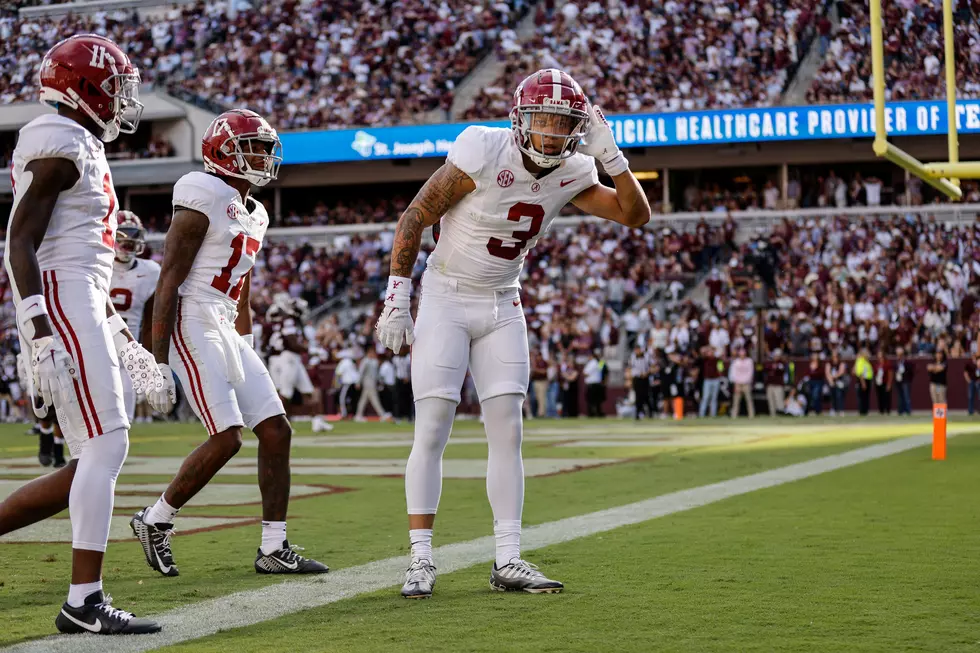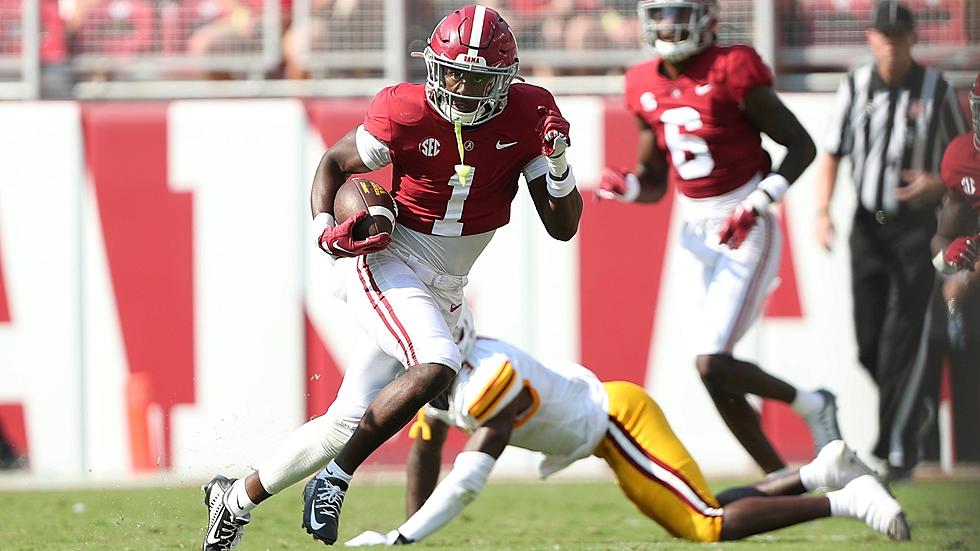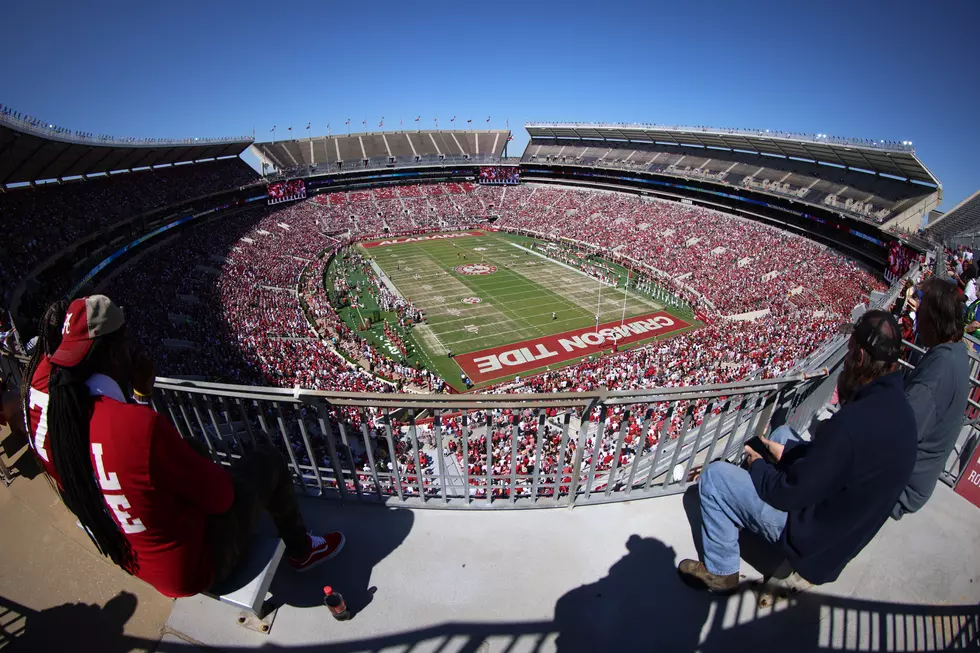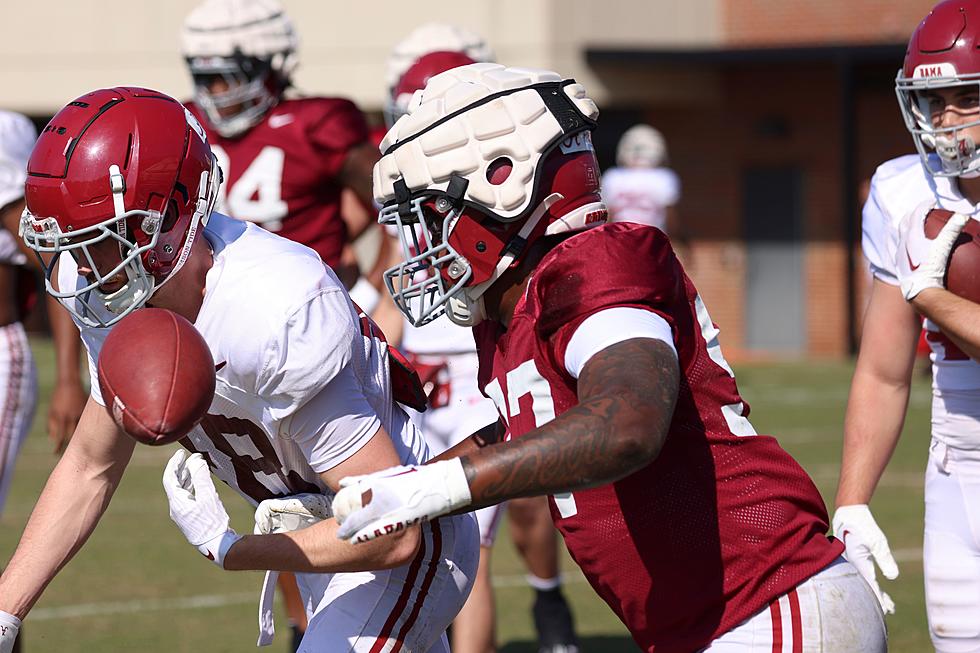
How Has Nick Saban Defended the HUNH on the Field?
It seems that everywhere you turn in the world of college football now, the talk is about the Hurry up/No Huddle (HUNH) offenses and some coaches' argument that a rule should be set in place to prevent injuries. However, this article has nothing to do with injuries. It has everything to do with how Nick Saban has defended the HUNH offensive style.
After finally realizing that the injury argument of the HUNH style of offense is basically a moot point, I decided to look at how the offenses actually affected the on-the-field play from one of the doyens of the "Saban Rule," Nick Saban himself.
It's well documented that I was not in favor of the proposed Saban Rule, and the fact that it was not passed earlier this month was only beneficial to the sport of football. However, I was curious about whether or not the injury argument was a façade for the supporting coaches, such as Saban and Bret Bielema. How does the HUNH affect their defenses?
Let me preface the rest of the column by saying this: I only pulled numbers from teams that Alabama played who ran a form of HUNH, from Auburn in 2010 (The "Camback") all the way to Oklahoma in this year's Sugar Bowl. Also, the only numbers that are referenced are numbers from plays that were snapped within 10 seconds of the play clock starting and NOT occurring during the final 2 minutes of either half (i.e. before 30 seconds left on the play clock), unless specified otherwise. I wanted to see how the proposed "Saban Rule" would have at least affected his team.
I'll begin in chronological order, starting in 2010.
*Note: I purposely omitted all other games except for the Auburn game in 2010, simply because the fastest pace of play team Alabama faced then was Duke, who ranked #25 in the country at 73.5 plays/game and did not run any plays within 10 seconds of the play clock starting. Also, no other team ran the "warp speed" HUNH offense and snapped the ball within 10 seconds of the play clock starting.
2010: the year that will live in Alabama football infamy, most notably for that year's Iron Bowl. Auburn was considered a "hurry-up" style of offense, whose pace of play (PoP) was 69.9 plays/game, good enough to rank #54 in the country. That isn't exactly lightning fast, by anyone's standards.
During the game, Auburn only ran three plays within 10 seconds of the play clock. However, the results of these plays may skew the final results. The first such play was called dead because of an illegal substitution on Alabama's defense, giving Auburn a free five yards. Immediately following the penalty, Auburn quickly set up on the line of scrimmage and snapped the ball soon after the play clock began, with the result being a loss of two yards. The third play was run as the first play of the 4th quarter, which resulted in a gain of four yards for the Tigers.
Now, most may say that three plays aren't enough to dictate the way a game is played, but there is more to this than first meets the eye. There were four other plays that Auburn was set and ready to run, but the officials slowed the plays down by not getting the ball set quickly enough and/or the "chain gang" didn't have the chains set for the next play (all of which were plays on 1st down, immediately following a big gain on the previous 1st down).
Should we consider these four plays as plays within the 10 second window, then it should be noted that Auburn gained 4, 3, 13, and 13 yards on these plays, with the infamous Lutzenkirchen TD catch coming immediately after the final 13 yard gain.
Unfortunately, Alabama did not play any teams in the 2011 season that ranked higher than #73 in PoP, and #73 just happened to be North Texas, so there were no eligible plays that occurred during that season.
The 2012 season made up for the absence of "warp speed" plays in 2011. Hugh Freeze has definitely changed the football culture in Oxford, MS, but his offense couldn't muster up any extremely fast plays against the Tide on Sept. 29. No relevant data was recorded from this game, but it should be noted that Ole Miss averaged over 76 plays/game that season, so not having any "warp speed" plays during a game was a rare occurrence for the Rebel Black Bears.
Missouri faced off against the Tide on Oct. 13, and although Alabama rained down 42 points on the Tigers, the actual rain was the main story of this game. Missouri was unable to run its up tempo offense in the weather (and Alabama's defense could have contributed to their inability to run it), so they did not run any plays within 10 seconds. Also worth noting that starting quarterback James Franklin did not play, adding to their offensive struggles that day.
Tennessee was the next team that the Tide faced off against who would run at least one play within 10 seconds. As a matter of fact, they only ran one play within the first 55 minutes of the game. That one play resulted in a 9 yard gain for the Volunteers.
There was, however, one other play that was snapped within 10 seconds, but it happened when Tennessee was trailing by 34 with five minutes left in the game. In this instance, I applied the two minute rule to this play (a play that resulted in a 2 yard gain). The Vols ran a fast paced offense all game, with many of their plays being snapped within 12-15 seconds of the play clock.
There were 4 legitimate plays that followed the "10 seconds or fewer" guidelines in the Texas A&M game, gaining 5, 5, -1, and 2 yards. However, the officials slowed down three A&M 1st down plays by not getting the chains and/or ball set quickly enough. On two of these plays, the Aggies snapped the ball much later in the play clock, but on the other play, A&M snapped the ball as soon as the officials allowed the game to resume, resulting in a 0 yard gain; which followed a long 1st down pass play down to the ALA 9 yard line.
Another problem that arose from this game was the matter of injuries. There's no way to know for certain whether or not the injuries are legitimate, so we must make a conservative assumption. Damion Square went down to the ground after a long pass play from the Aggies, who were lining up to run a play as soon as the officials set the ball. Determining his level of injury is impossible as an outsider looking in, but it can't be argued that Square's possibly coincidental injury slowed down the Aggie offense to allow Nick Saban and Kirby Smart time to substitute on defense (which, if that were their plan, didn't really help matters much, considering A&M scored a TD on the next play). Also worth noting that Square's injury occurred close to the new line of scrimmage, not the previous line of scrimmage where he would have probably gotten injured some 40 yards back up the field. Again, I'm not saying he was faking. In fact, I'm assuming none of the injuries were faked and that it was sheer coincidence, nothing more.
The Texas A&M game ended the HUNH offenses that Alabama would face that season, but was the first team that the Tide would see in the 2013 season. The Aggies had no problems at all moving the ball against the Tide, amassing well over 600 yards of offense and putting up 42 points. However, they ran 8 plays in under 10 seconds of the play clock, having a sporadic array of success: 31, 1, 7, 18, 3, and 20 yards on six of them. The other two plays were incomplete passes, but Alabama was called for defensive holding on one of them, which gave A&M a free first down.
Ole Miss stepped up their offense from the previous year, ranking at #21 in PoP at 79.8 plays/game. The Rebels ran only three plays (all in the same possession during the 3rd quarter) within 10 seconds, and a fourth if you count the officials slowing down their tempo by not setting the ball quickly enough. They were able to produce 9 and 11 yards on the first two "warp speed" plays; however, defensive lineman Brandon Ivory went down with an injury after the 11 yard gain (he returned to the game soon after). The Rebels' next play did not result in any gained yardage, but Alabama was penalized with Targeting, which gave Ole Miss 15 yards and a 1st down.
Look away if you still get sick thinking about Nov. 30... You have been warned.
Auburn, contrary to popular belief, was actually in the middle of the pack concerning PoP. They ranked #62 by averaging 73.8 plays/game. However, in the most recent rendition of the Iron Bowl, the Tigers ran 14 plays within 10 seconds of the play clock, amassing 98 yards on those 14 plays, which averages out to 7 yards/play. There were two possessions in which the Tigers ran 3 straight "warp speed" plays. On the latter of these two possessions, Brandon Ivory, again, went down with an injury after Auburn was able to gain momentum on the drive.
Of course, we all know how the game ended, so there's no need for me to go into detail about that.
The most recent of the match-ups against HUNH teams was Oklahoma. The Sooners ran nine "warp speed" plays, resulting in 39 yards and one interception. None of these plays directly produced any points, but keeping the Alabama defense on their heels was integral in producing the big plays that did allow them to put up 45 points on arguably the best defense in college football.
Overall, Alabama's defense has seen just 48 plays that were snapped within 10 seconds of the play clock since the 2010 Iron Bowl, allowing teams to gain 297 yards, averaging out to approximately 6.2 yards/play. Compare that number to Alabama's total 2013 average of 4.83 yards/play and 2012's average of 4.18 yards/play, one can clearly see where the issue is for Saban and Smart; it's no secret that HUNH offenses are difficult to stop. Don't be surprised if this becomes an increasingly common theme against the Tide in the next year or two, if for only 5 or 6 plays per game.
Although there exists no definitive proof that PoP directly correlates to injury occurrence, the evidence suggests that Saban, in fact, has a difficult time defending against fast paced plays, not necessarily fast paced teams. This could possibly give slower paced teams such as LSU and Mississippi State something extra to work on during the week leading up to the Alabama game.







